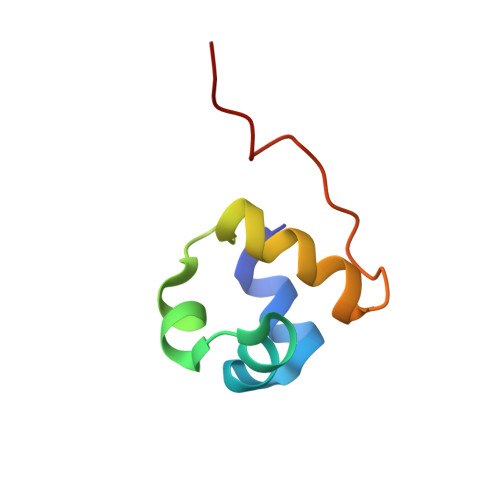Secondary structure switching in Cro protein evolution.
Newlove, T., Konieczka, J.H., Cordes, M.H.(2004) Structure 12: 569-581
- PubMed: 15062080
- DOI: https://doi.org/10.1016/j.str.2004.02.024
- Primary Citation of Related Structures:
1RZS - PubMed Abstract:
We report the solution structure of the Cro protein from bacteriophage P22. Comparisons of its sequence and structure to those of lambda Cro strongly suggest an alpha-to-beta secondary structure switching event during Cro evolution. The folds of P22 Cro and lambda Cro share a three alpha helix fragment comprising the N-terminal half of the domain. However, P22 Cro's C terminus folds as two helices, while lambda Cro's folds as a beta hairpin. The all-alpha fold found for P22 Cro appears to be ancestral, since it also occurs in cI proteins, which are anciently duplicated paralogues of Cro. PSI-BLAST and transitive homology analyses strongly suggest that the sequences of P22 Cro and lambda Cro are globally homologous despite encoding different folds. The alpha+beta fold of lambda Cro therefore likely evolved from its all-alpha ancestor by homologous secondary structure switching, rather than by nonhomologous replacement of both sequence and structure.
Organizational Affiliation:
Department of Biochemistry and Molecular Biophysics, University of Arizona, Tucson, AZ 85701 USA.
















